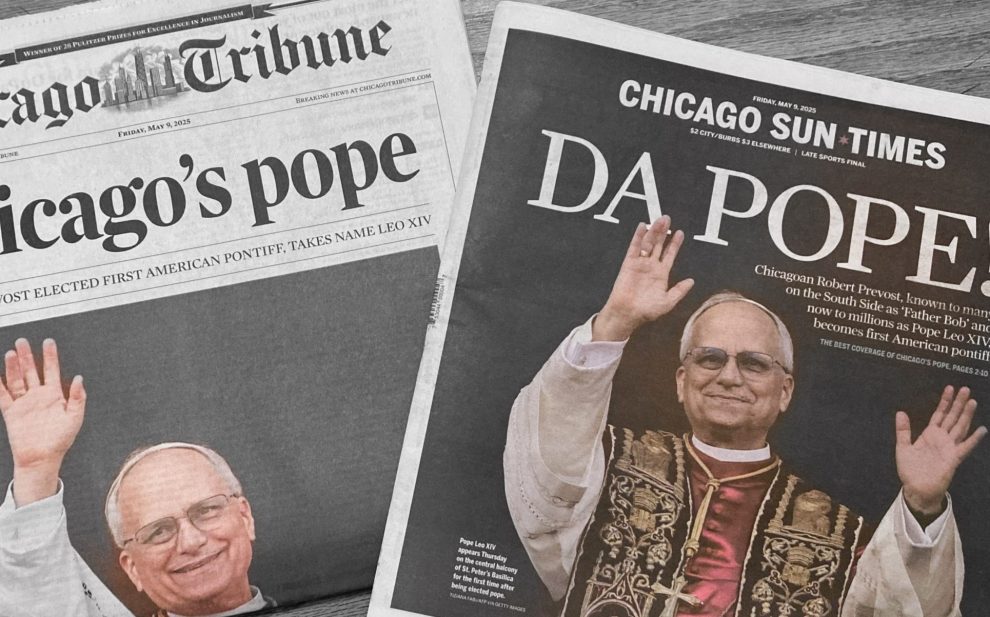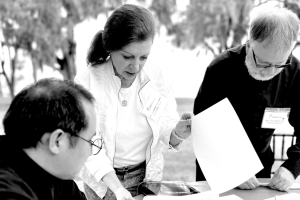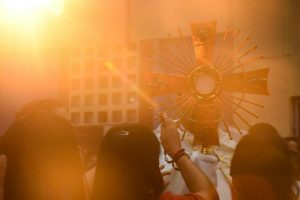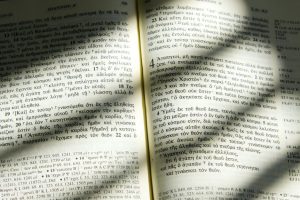Just hours after the election of Pope Leo XIV, media discourse was already making much of his Chicago roots, including discussing which sports teams he supports and where he goes for pizza. But Pope Leo’s Chicago connections have a deeper significance that point to how he may lead the church. The name Leo invokes Pope Leo XIII, with his 1891 encyclical Rerum Novarum (On Capital and Labor), foundational for Catholic social teaching in the modern world and inspirational for Catholics who organize for labor justice. This alliance of Catholicism and labor is an essential component of the history of the church in Chicago, where Catholics, both lay and religious, have always been actively involved in unions and community organizing.
Chicago is also home to Catholic Theological Union (CTU), where Pope Leo, as Robert Francis Prevost, earned his master of divinity degree in 1982. As the world welcomes its first pope from the United States, faculty at CTU congratulate an alumnus.
Claretian Father Ferdinand Okorie, editor-in-chief of U.S. Catholic, is vice president and academic dean at CTU and an assistant professor of New Testament studies there. “It is an exciting time for us at Catholic Theological Union to see one of our graduates elected as the head of the Roman Catholic Church,” Okorie said. “The election of Pope Leo XIV shows that Catholic Theological Union is committed to its mission to form leaders for the church and the world.”
Carmen M. Nanko-Fernández is professor of Hispanic theology and ministry and director of the Hispanic Theology and Ministry Program at CTU. She said she is “stunned to be teaching on the faculty of the first U.S. theological school to educate a pope in theology and ministry.” Some of her colleagues were his professors, and others were his classmates.
“Honestly, it’s mind blowing,” said Nanko-Fernández. “How our little corner of the world got thrust into the middle of a world event.”
Scholarly, reliable, and welcoming
Sister of St. Agnes Dianne Bergant, a professor emerita of Old Testament Studies at CTU, came to CTU in 1978, the same year Pope Leo did. She remembers him as a student who was “serious about his studies,” but not so serious that he couldn’t enjoy spending time with people. After 45 years of teaching, Bergant still keeps her student grade records, she said, so she can attest to his academic abilities. “My records even tell me whether or not his papers were on time. He was a very reliable student,” Bergant said.
CTU was only 10 years old then and, according to Bergant, had a “remarkable sense of community.” Pope Leo fit right in. “We often prayed together as a school, and we partied at the school and at various religious houses. He was an active part of all that,” she said.
Having a former student elected to the papacy creates a unique challenge: How to address him? Bergant says that when Pope Leo was Robert Prevost, she always called him Bob. “In an email response I received from him on the occasion of his being named cardinal, he signed it Bob,” she said. “But it doesn’t seem right, calling the pope Bob.”
Bergant said she last saw her former student about 10 years ago at an Augustinian ordination. “He was as pleasant and welcoming as ever,” she said.
Catholic Theological Union and the church in the modern world
CTU’s history offers a snapshot of the U.S. church in the second half of the 20th century. It was founded in 1968, an era of political and civil turbulence. First formed in Hyde Park as a union of schools from three different Catholic institutes, CTU was collaborative from the beginning, holding its first classes in the educational center of the Sinai Temple.
Over the years CTU has prioritized diversity and dialogue, opening its doors to women both lay and religious and launching a program in Hispanic Studies. In 1989 CTU started the Augustus Tolton Program, which offers scholarship and formation for African American lay ministers. A few years later, in 1994, it launched the Óscar Romero Program, offering similar resources to Hispanic lay ministers. CTU’s Catholic-Jewish Studies program has been around nearly since its founding, and in 1999 it launched a similar Catholic-Muslim Studies program.
In 1996, CTU created the Cardinal Bernardin Center to maintain the legacy of Cardinal Joseph Bernardin, archbishop of Chicago from 1982 until 1996. Bernardin may be best known for popularizing the term “seamless garment ethics,” which originated with Catholic Worker Eileen Egan. The term has frequently been referenced by activists in the United States and abroad who want to emphasize a consistent ethic of life, in contrast to a single-issue moral approach.
In 2021, CTU inaugurated its first woman president, Dominican Sister Barbara Reid.
Pope Francis’ vision for leadership in the church
The mission of CTU, according to its website, is to “prepare effective leaders for the Church, ready to witness to Christ’s good news of justice, love and peace.” Kevin Considine, an assistant professor of systematic theology and director of the Schreiter Institute at CTU, said that as a Chicagoan and CTU alum, “the new pope was formed by a sense of compassion, justice, and human dignity” and that these are “core values for preparing effective leaders for the church.”
When Pope Leo stepped out onto the balcony of St. Peter’s Basilica, his first words to the crowds were, “Peace be with you.” This, the new pope said, “is the first greeting of the risen Christ, the good shepherd who gave his life for God’s flock.”
Pope Leo went on to speak of the world’s need for Christ, “as the bridge to allow it to be reached by God and by his love,” and beseeched the people of God to “help each other to build bridges, with dialogue, with meetings, uniting us all to be one people, always in peace.” The language of bridge building, popular with Pope Francis, communicated the new pontiff’s determination to carry on the legacy of his predecessor.
Nanko-Fernández, referencing Pope Leo’s time as a missionary and a bishop in Peru, noted that he lived out the vision of Pope Francis, “who called both ministers and theologians to bear the smell of the sheep and the street, the scent of the people.”
As Cardinal Robert Francis Prevost, the new pope was a strong supporter of Pope Francis’ vision for the church, at the heart of which was an emphasis on a synodal or listening church, where all are welcome, including the wounded and marginalized.
Considine said that both Pope Leo and CTU “honor Pope Francis’ pastoral vision of the church as a field hospital and that CTU’s mission “resonates with the challenges of becoming a Spirit-infused, truth-inspired, preaching church and a listening church that ministers with the wounded, vulnerable, and marginalized in the world.”
According to Nanko-Fernández, CTU was “synodal before its time,” as it prepared men from many different religious communities for the priesthood alongside women religious and laypeople preparing for ministry.
A rich and diverse Catholic tradition
In invoking the church of the 19th century with the name Leo while making his first appearance in more traditional garb, the new pope points to the reality that the church’s social teaching is itself traditional.
This juxtaposition of tradition with social teaching should be a reminder that in the 19th century, the Catholic Church in the United States was a church largely of immigrants and laborers. In Chicago, the church was ethnically and culturally diverse, connected to the broader world, and this diversity is reflected at CTU still, where students come from over 40 countries, including China, Vietnam, Nigeria, Kenya, Germany, Croatia, and Argentina.
“CTU reflects the global church in so many ways,” Nanko-Fernández said. Noting Pope Leo’s “ethnically hybrid background and his greetings in Italian and Spanish,” she hoped that this would remind people in the United States that “ours is a rich cultural land of multiple languages and people, many who arrived as or descended from migrants and immigrants.”
Just a few months prior to his election to the papacy, Pope Leo—then Cardinal Prevost—corrected Vice President JD Vance’s misrepresentation of the Augustinian “order of love.” Vance had attempted to use the idea to denigrate immigrants and argue that people should care primarily for their own.
“JD Vance is wrong: Jesus doesn’t ask us to rank our love for others,” he posted on X, while sharing an article on the topic from the National Catholic Reporter.
As an Augustinian priest with degrees from Villanova University and the Pontifical University of St. Thomas Aquinas, as well as from CTU, the new pope is well equipped to correct the deformations of Christian thought associated with nationalistic anti-immigrant sentiment.
The spirit of Vatican II
Pope Leo, like Pope Francis, appears to be committed to the spirit and reforms of the Second Vatican Council. In this, too, he reflects the values of CTU.
“CTU was born out of the spirit of Vatican II,” Nanko-Fernández said, “and that has infused its mission for almost 60 years.”
At the heart of Vatican II was a concern that the church had become too insular, siloed off from the world and no longer capable of carrying out the gospel mission. In his first address to the crowds, Pope Leo referenced the mandate “to proclaim the gospel, to be missionaries.”
A missionary church, in the tradition of Pope Francis, is not a proselytizing church. The point is not to secure members for one’s team, but to bring the good news of Jesus’ liberatory teachings to all people. Pope Leo shows every sign that he will hold to his predecessor’s ecclesiastical conceptions, and his formation at CTU supports this.
“That academic and pastoral formation en conjunto, in an urban setting and in a context that encouraged interreligious and ecumenical relations, undoubtedly helped nurture Pope Leo XIV’s vision and practice,” said Nanko-Fernández.
A political vision for the church
This a “remarkable time for the church and the world as the catholic Church elects a humble man, a great listener with a charismatic wit and wisdom, as Pope Leo XIV,” Okorie said.
The last Pope Leo was elected shortly after the dissolution of the papal states in 1870. He was the first pope since the eighth century to preside over a church without the papal states—a reality that may have prompted him to think differently about the church’s place in political and social orders. In an era of unfettered capitalism and widespread income inequality, Leo XIII’s pastoral tenure was informed both by his academic proficiency and his belief that political and social engagement, especially in matters of social justice and defending the rights of the person, is essential to the church’s role in the world.
Today, income inequality is at a level comparable to that of the Gilded Age, when the last Pope Leo took office. Some Catholics think the cure for the world’s ills would be for the church to return to the era when ecclesial and political power were commingled. Can this new Pope Leo, with his roots in Chicago Catholicism and his academic formation at an institution prioritizing social engagement, steer the church toward a better way?
Image: Kerry Butler
This article is also available to read in Spanish.












Add comment